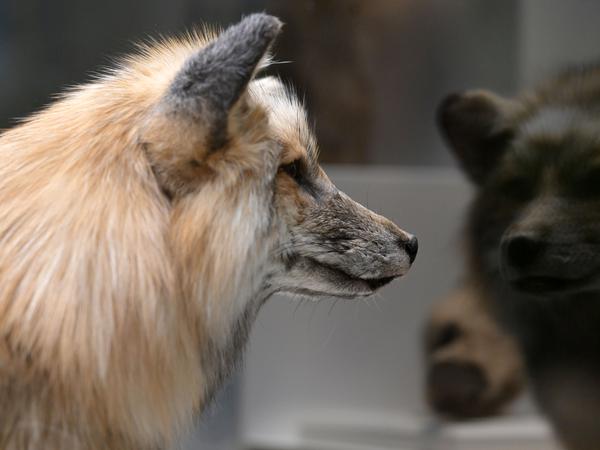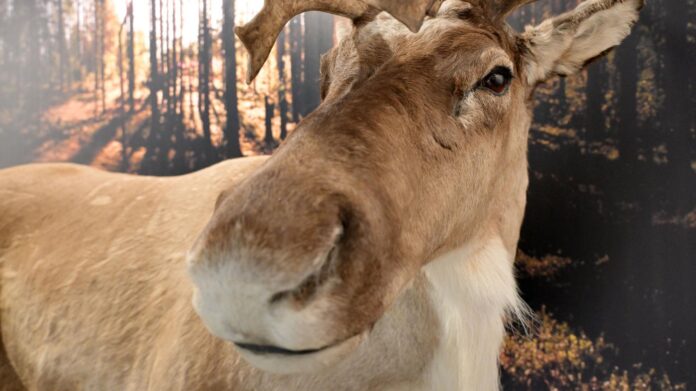The new special exhibition at the Potsdam Natural History Museum takes visitors to the far north with its endless forests, northern lights and unique wildlife “Animals in the Northern Lights” (from 12 September).
The region should be shown in all its facets, says the curator of the exhibition, Ina PokornyOther topics covered include ice ages, adaptation to the cold, bird migration, the northern lights and climate change.

© PNN/Michael Bahlo
On display in the special exhibition area of 60 square meters are rocks from the Ice Age, but also animals such as the newly acquired specimen of a Musk oxen or a Wolverine (Gulo gulo)which is particularly dear to Ina Pokorny’s heart, as it was prepared at the very beginning of her work at the museum. Also new in Potsdam is a Scandinavian red fox with thick winter fur and long hair on its paws, which is therefore not immediately recognizable as a European red fox. It will be on display next to its relative, the Arctic fox.

© PNN/Michael Bahlo
Recommended editorial content
Here you will find external content selected by our editors that enriches the article with additional information. You can display or hide the external content with one click.
I agree to the external content being displayed to me. This means that personal data can be transmitted to third-party platforms. You can find more information about this in the data protection settings. You can find these at the very bottom of our page in the footer, so that you can manage or revoke your settings at any time.
The objects are accompanied by northern lights photographs from Norway and Finland, taken by the Potsdam photographer Susann Giese. The topic of climate change in the Arctic was also addressed, and the Alfred Wegener Institute, Helmholtz Centre for Polar and Marine Research (AWI) It works primarily in the cold and temperate regions of the world and also researches how permafrost landscapes in the far north are changing. Some of the AWI’s exhibits show how people there protect themselves from the cold.
The special exhibition in Natural History Museum Potsdam at Breite Straße 13 is always open from Tuesday to Sunday from 9 a.m. to 5 p.m., with a 50 percent discount on the first Monday of the month.
